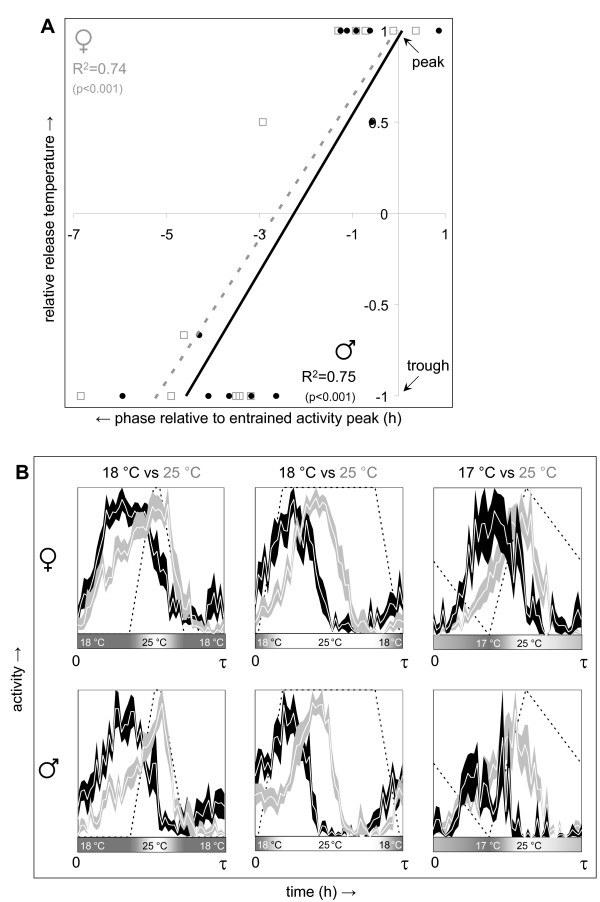Figure 4.
The phase of temperature-entrained circadian behavior is modulated by the relative temperature of release into free run. Locomotor activity was recorded for 28 groups of Canton-S flies (14 of each gender) subjected to 1 of 12 different combinations of daily temperature gradients and free running temperatures in constant darkness. The phase of circadian peak activity during free run was determined from median activity records and phase shifts were determined relative to daily peak activity during previous temperature entrainment. Phase shifts are graphed in panel (A) as a function of the relative temperature of release (expressed as a position in the entraining temperature range (-1 to +1)). The data is plotted separately for each gender along with trend lines and associated correlation coefficients and their significance (2-tailed). Female and male data are indicated by gray open squares with dashed lines and black filled circles with solid lines, respectively. The circadian activity profiles (mean ± S.E.M. across the circadian period length τ) in panel (B) illustrate phase shifts resulting from differences in relative release temperature. Profiles associated with release at the thermophase (25°C in all three examples) are indicated by white lines with gray shading, while profiles associated with cryophase release (17°C or 18°C) are indicated by white lines with black shading. The dotted lines in the activity profiles as well as the shaded bars underneath represent the daily temperature gradient used during previous entrainment. The activity profiles recorded during previous entrainment for these examples are found in Figure 2C.

